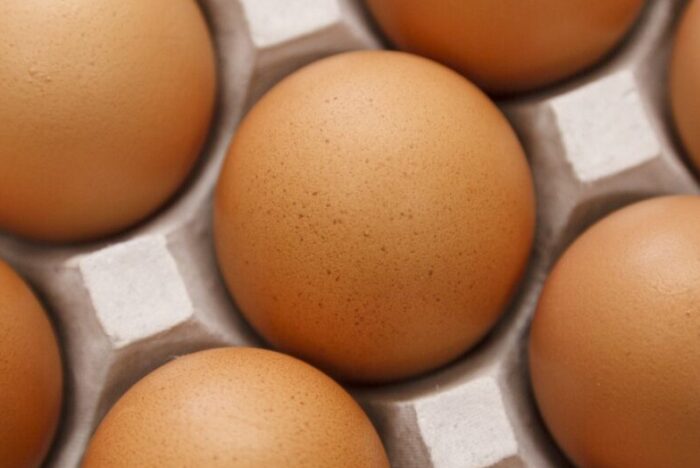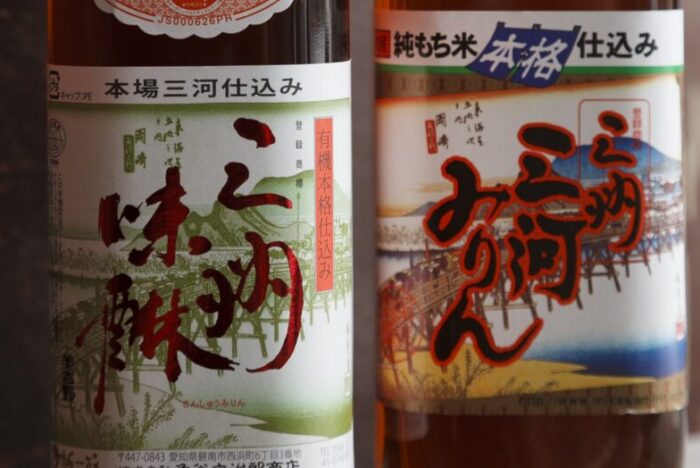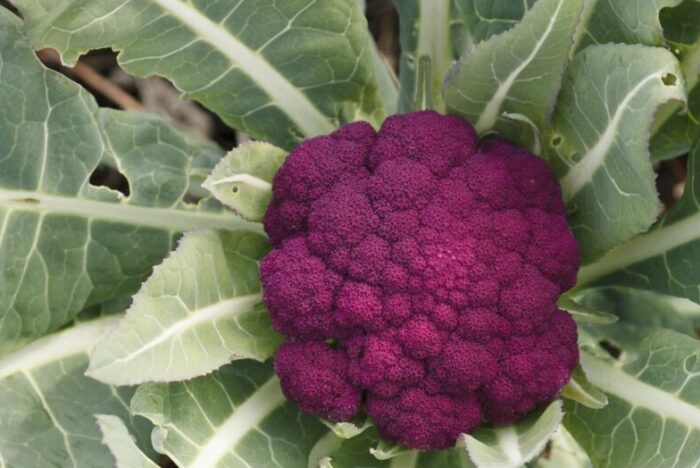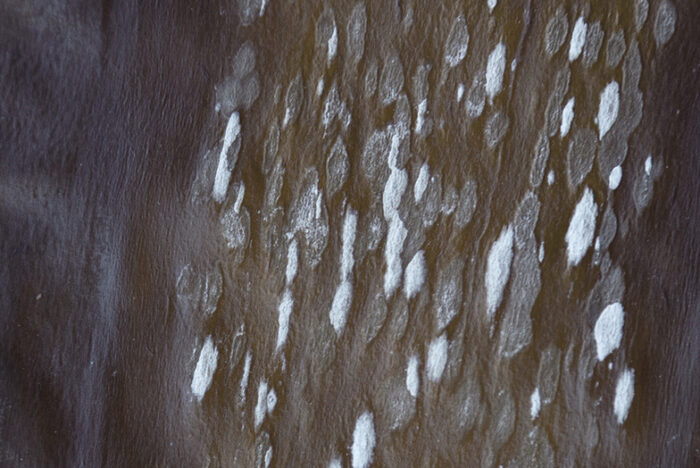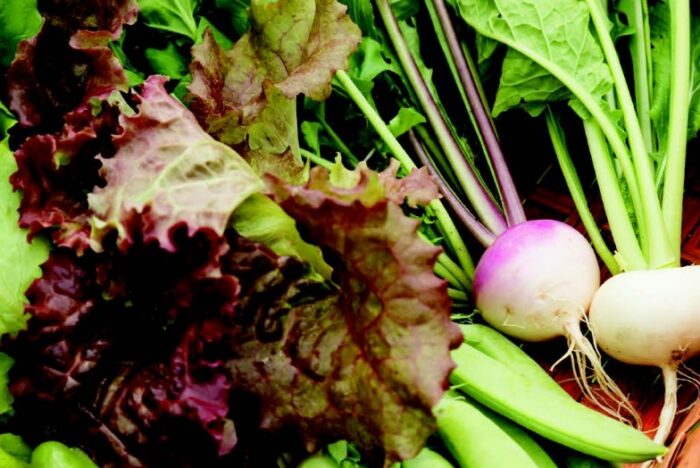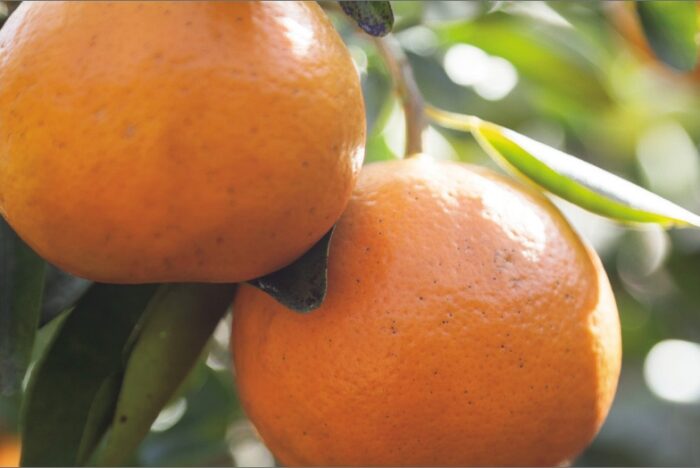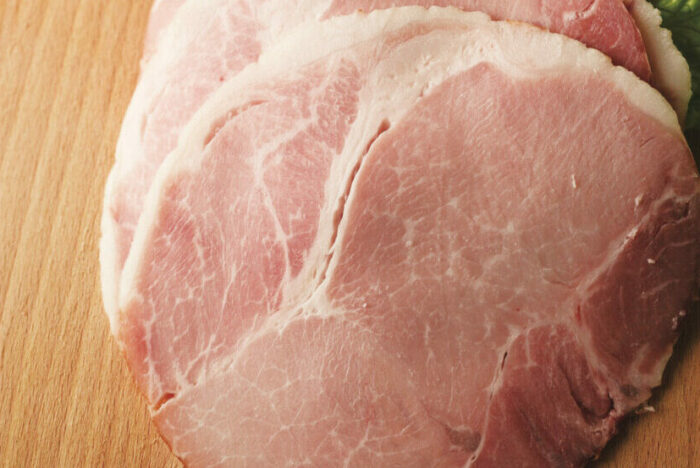Food of Japan: Learn and Enjoy
SUNABA SOUHONKE since the mid-1700s
Time-Honored Shops - Japan’s Hidden Treasures by Mr. Shoku-iku, Yukio Hattori Series
2016.05.01
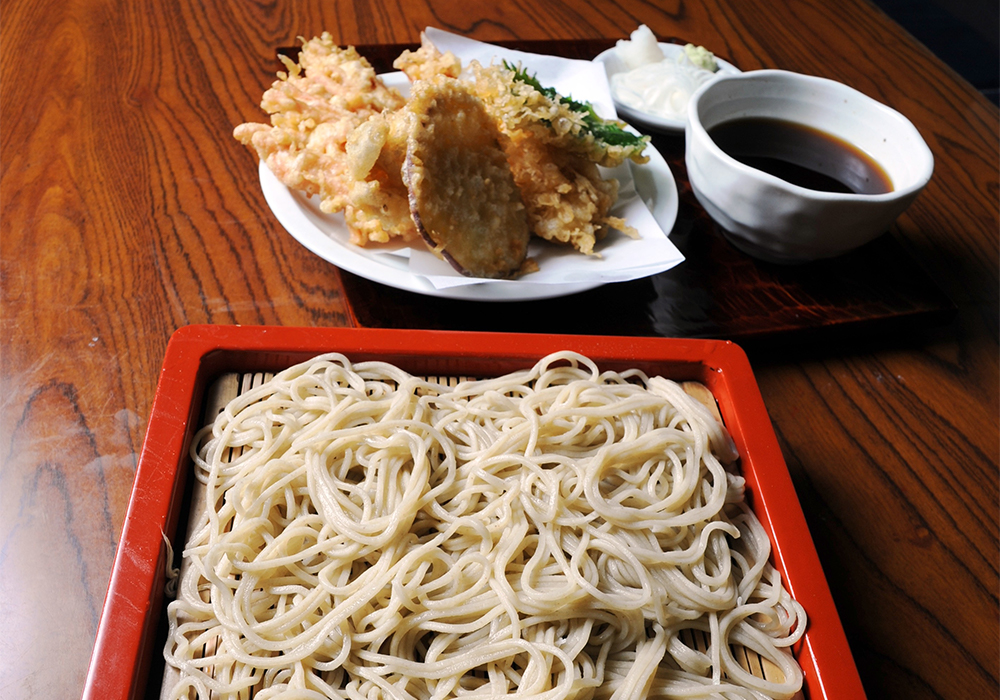
The best-selling tenzaru combination of cold noodles and a side of piping-hot tempura with dipping sauce is ¥1,550. Deep-fried in fragrant 100% sesame oil, the shrimp and vegetables are milder in taste than most served in Kanto, a fine match to the light slippy noodles.
text by Michiko Watanabe / photographs by Toshio Sugiura
Of Tokyo’s venerable soba shops, Sunaba is the oldest. Trivia buffs know that it takes its name from the mounds of sand excavated to build Osaka Castle, as the first shop was located near them. While that place-name no longer exists, the old ways continue on at Sunaba today, as 14th-generation owner Takashi Nagaoka explains.
Three Words: Ingredients, Ingredients, Ingredients
Sunaba traces its business origins back to Osaka. After coming to Tokyo it did well here, eventually expanding to more than 100 branches. My family ran one that was located in what is now the Kojimachi area of Tokyo, moving to our present location here in Minami Senju in 1912. This is the east side of the city north of the bay, and back in those days it was wet and swampy. But there were brothels nearby, as well as an embankment that led right into the famous Yoshiwara red-light district, so apparently there were plenty of customers around.
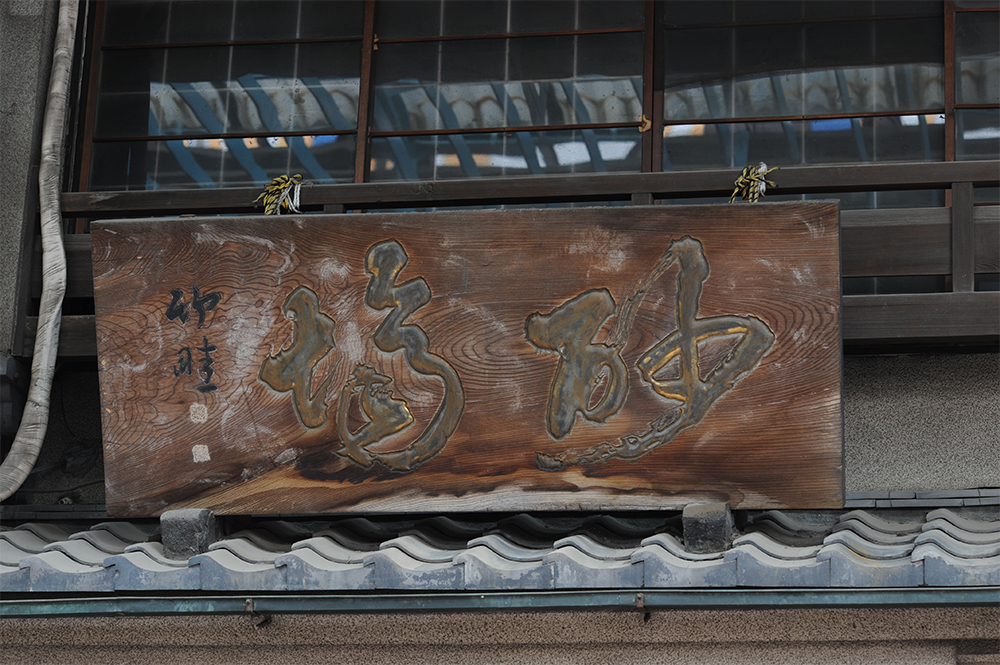
The historic nameboard of Sunaba
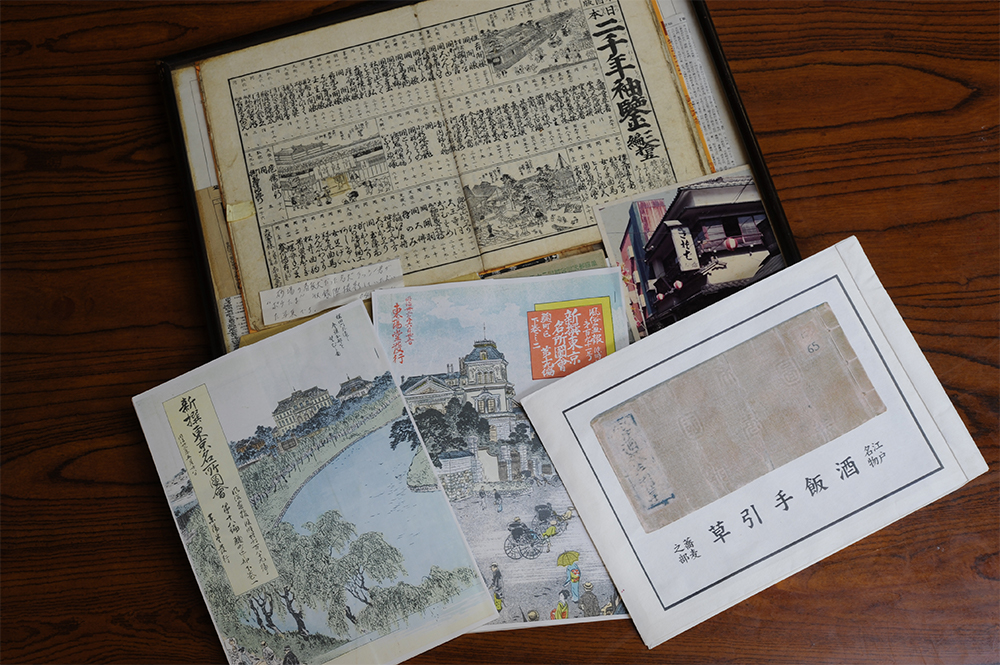
An assortment of antiquarian books and archived materials about the shop has been gathered over the years by its regular customers.
My father died not long after taking over the business, so for a time my mother ran things with a manager. As soon as I graduated from college I came on board. My focus since then has been on the quality of our ingredients. If you procure the best, then all you have to do is clear your mind and really listen to what their condition and flavors are telling you. The buckwheat dough finds its own right consistency, the tempura shows you the right time for lifting it out of the pot. Mostly it seems all I do is guide these foods along the way.
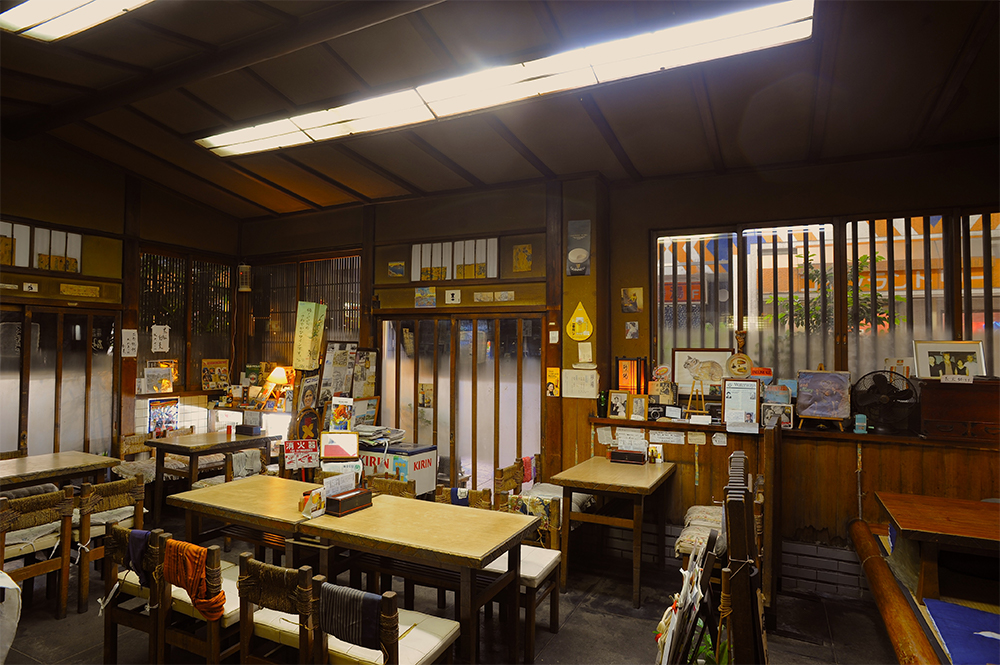
Showa-era knickknacks add to Sunaba’s retro charm inside.
The delicate flavor and fragrance of buckwheat are easily affected by shifts in temperature and humidity, so we adjust the ratios of our flour blends carefully. When you’re in tune with the ingredients it only takes a touch of the hand to know what’s needed. At present we use buckwheat flours from two heirloom strains grown in Hokkaido: the Shinshu Nagawa variety, and a native Hokkaido strain. To make the noodles we add eggs and charcoal-purified water. We blend everything and knead the dough by hand, but the rolling and cutting are automated.
We make our dipping sauce with soy sauce and mirin, and let the flavors jell in a huge customized vat purchased by my father. We draw our stock for the broth from katsuo, freshly shaved for each batch.
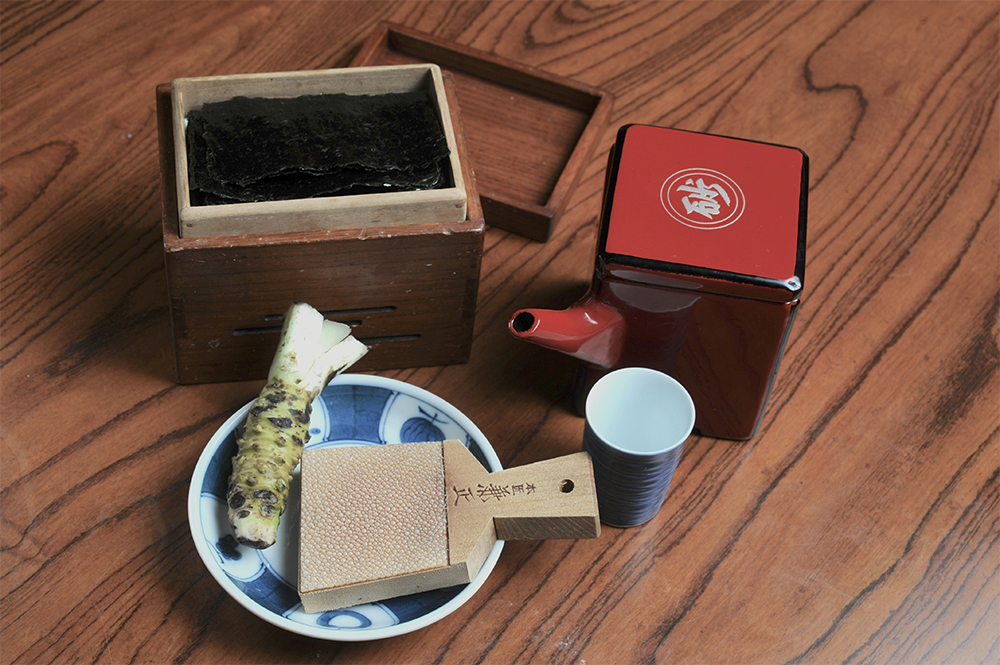
The tableware and other implements are chosen with as much care as ingredients like wild wasabi root. Nori stays crisp and dry in a traditional paulownia-wood box designed with a compartment for burning charcoal.
My wife, who’s in charge of the bookkeeping, often tells me to think more about profit margins when it comes to choosing ingredients, but there’s no skimping on taste. That’s why I insist on using the best, and I believe our customers appreciate the difference.
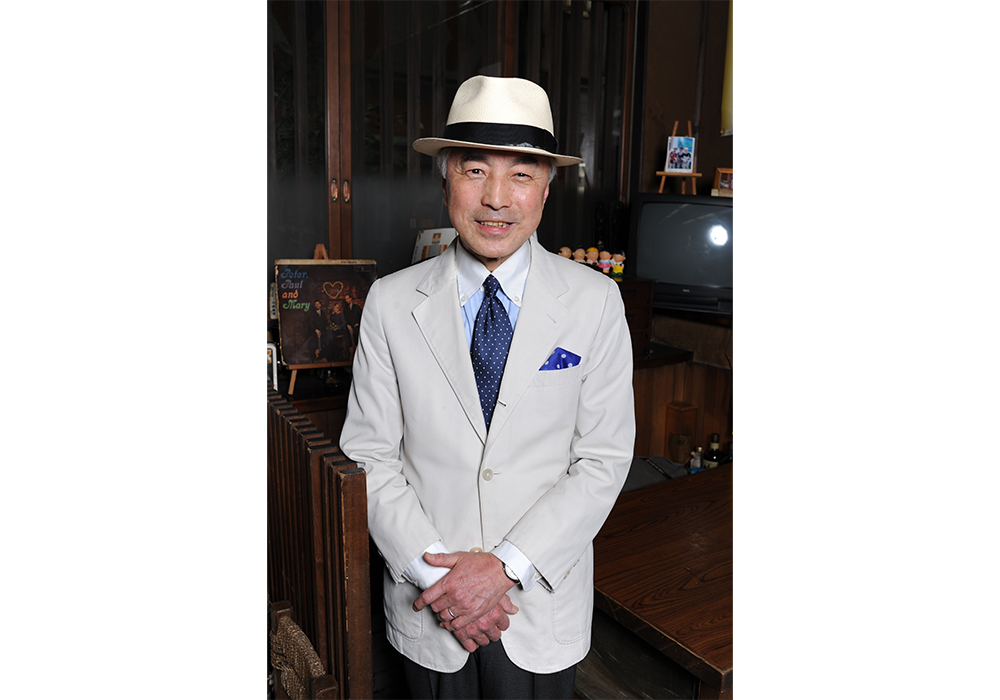
When he’s not in the kitchen, dashing proprietor Takashi Nagaoka prefers the preppy look, complete with his favorite Panama hat.
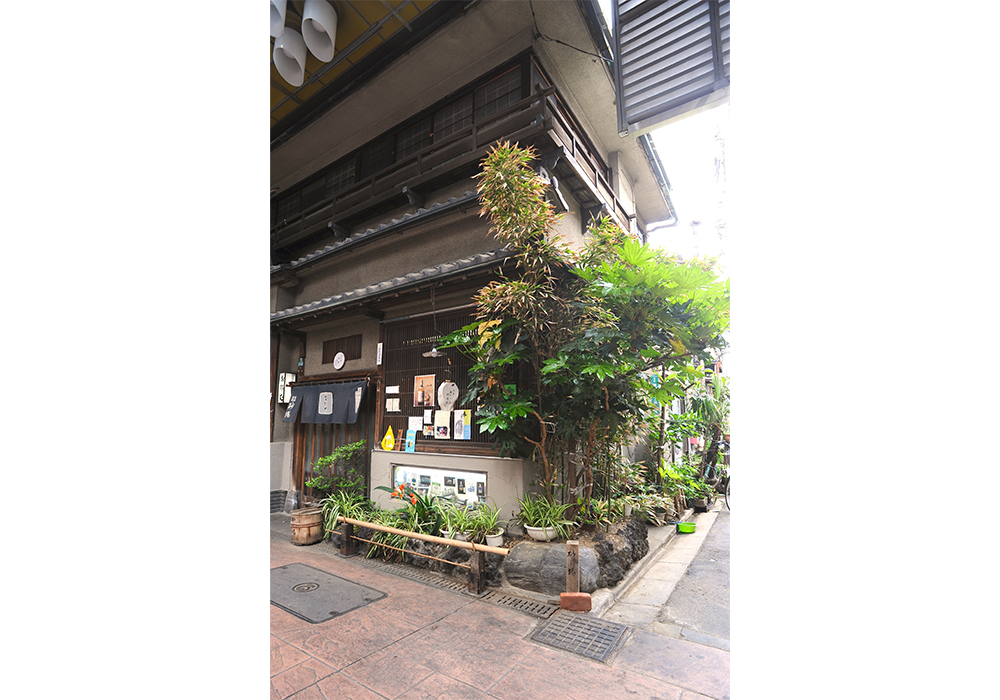
Even the wooden window sashes at Sunaba are the original work of the builder, a specialist in temple and shrine design, who erected the shop in 1954.
◎Sunaba Souhonke
Minami Senju 1-27-6, Arakawa-ku, Tokyo
☎03-3891-5408.
From 10:30 a.m. to 8 p.m. daily except Thursdays.
Five minutes on foot from Minowa Station on the Tokyo Metro Hibiya Line.


